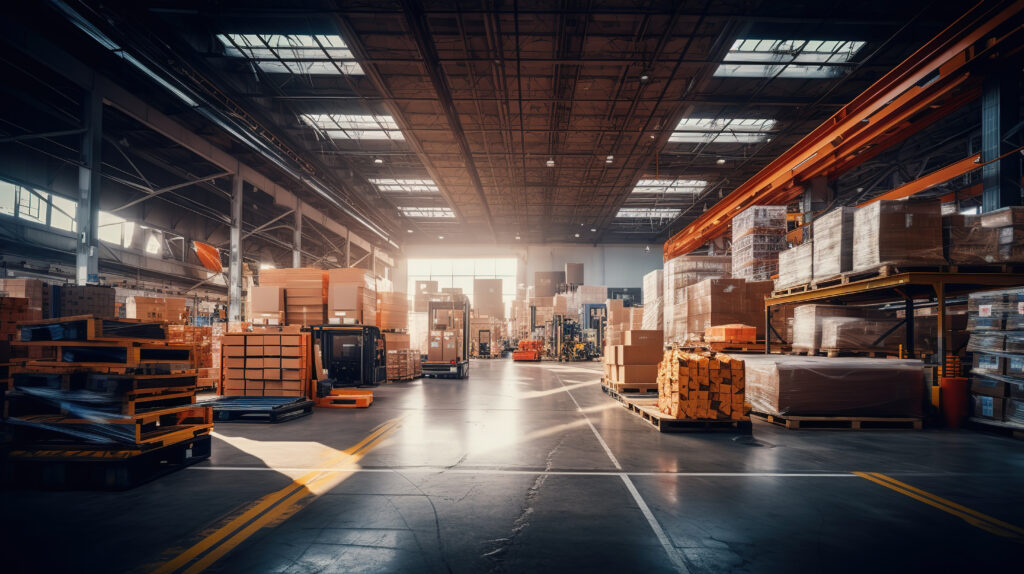This article will help you understand the importance of practical warehouse design and layout, and how to achieve it. A poorly designed warehouse layout is more than inefficient. It also slows down operations, increases costs, and becomes a safety hazard.
When reviewing your current design and layout or launching a new facility, there are some important issues to consider:
1.
The flow of people and equipment
Productivity increases when there is clearly defined, smooth movement of people and goods. The aim is to reduce the handling of goods to a minimum.

2.
Best use of the available space
Work areas must be allocated for unloading, receiving, storage, picking, packing, and dispatch. The optimum use of space can improve your throughput and reduce costs.
3.
Handling equipment
Identify the type of equipment you need: conveyors, pallets, forklifts, and any automated vehicles. Armed with this information, you can design the most effective layout to suit your requirements.
4.
Employee productivity
The layout should arrange processes in a logical sequence that minimises unnecessary movement of people. There must be easy access to every item. A well-planned layout reduces stress on workers and saves time.
5.
Technology
New technology tools speed up communication, automate processes and reduce paperwork. There are many options, so choosing the right ones for you is important.
Last but not least, is the budget. Any calculation must include all business requirements, including indirect extra costs to be incurred such as heating and ventilation and employee retraining.

Trends in warehouse design and layout
Whether it is a new facility you need, an extension to an existing space or a re-fit, there are warehouse design and layout software packages available, including templates. These use interior and exterior dimensions including floor area and height. They also take into account electrical installations, building limitations, ventilation and heating systems.
There are many cloud-based solutions available to streamline operations such as Warehouse Management Systems (WMS) and mobile barcode scanners for real-time inventory tracking. Advanced technologies such as artificial intelligence (AI), and the increased connectivity of tools such as voice, augmented reality, and robots continue to be embedded in the latest offerings. Selecting the best ones for your business can be overwhelming.
Storage systems have come a long way. Selecting the right warehouse storage solution can be an exhausting task due to the wide variety of systems available on the market. There are many types of racking systems now, each suitable for different levels of access requirements. The ‘classic’ pallet racking system remains the most used storage solution due to its relatively low investment costs and flexibility.
4 steps towards the best design and layout for you
1.
Establish your objectives.
Document your current situation. This includes providing answers to these questions:
- What is the current storage space required for each of your inventory items?
- Where are the inefficiencies in your current operation?
- Why are you not achieving the desired speed of throughput?
- What are your seasonal peaks?
2.
What do you need for the next 3 – 5 years?
Now consider your strategy. This includes forecasting your future capacity and resource needs for the medium term. This includes both your current and projected facilities, which could be both internal and outsourced.
- How much capital investment do you think you need?
- What type of storage equipment and media will be needed?
- Are there any new processes and activities that will take place in the warehouse?
- What type of automated systems and technology will be required?
- What will the effect be on employee resources?
This step will determine your broad design and layout and how to make the best use of the available space in this time frame. However, some flexibility within the design is vital: business needs and economic circumstances change.
3.
Layout and workspaces
Clearly defined work areas maximise efficiency, minimise risk and safety issues. Although the main space will be allocated for operations, storage and throughput activities, space is also required for offices, rest areas, pallet storage, vehicle parking, battery charging, etc.
- Receiving goods
Unloading docks need to be spacious enough to avoid congestion. The volume and frequency of incoming goods should be analysed to establish how many docking areas are needed. Space must be allocated for inspection and for storing damaged goods. Bottlenecks in receiving goods waste time, cause safety issues and introduce processing errors.
- Storage
When designing storage areas, we recommend that you make maximum use of vertical space to increase capacity. Consider the type of products stored, which are the most active, and how they will move through the warehouse. Efficient storage systems reduce the amount of picking time.
- Loading and dispatch
The dispatch area should be separated from other spaces in the warehouse to avoid congestion. The loading area should be separate from unloading – a shared loading and unloading dock creates challenges in coordinating arriving and departing vehicles.
4.
Defining the flow
Design and layout are directly influenced by the flow of goods through the warehouse. One-way flow is regarded as the most efficient and safest movement path in a warehouse. It helps ensure safety and eliminates congestion. Internal pathways should be clearly labelled with signs or floor markings to show the direction of movement. In the yard area, consider the flow of vehicles in and out, queueing and parking facilities for trucks, trailers, and visitors.
To ensure the optimal utilisation of resources, both physical and human, selecting the most suitable warehouse layout design for your facility is vital.
As experts in warehouse layout and process design, The Supply Chain Consulting Group is well-placed to help figure out the best solution for you. The choice of the right warehouse management system and other technology tools is important. As well as suggesting technology solutions and layout improvements, we can also recommend changes to shift patterns, working methods, system processes, written procedures, floor markings, and signage.














